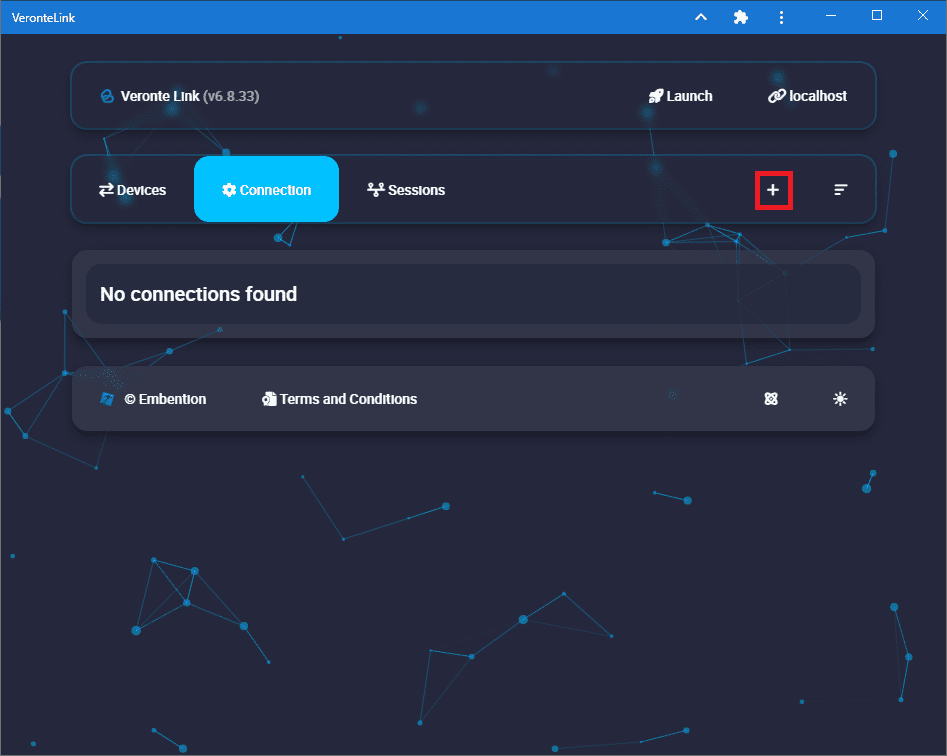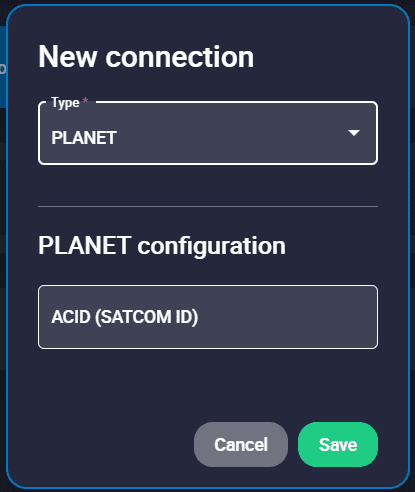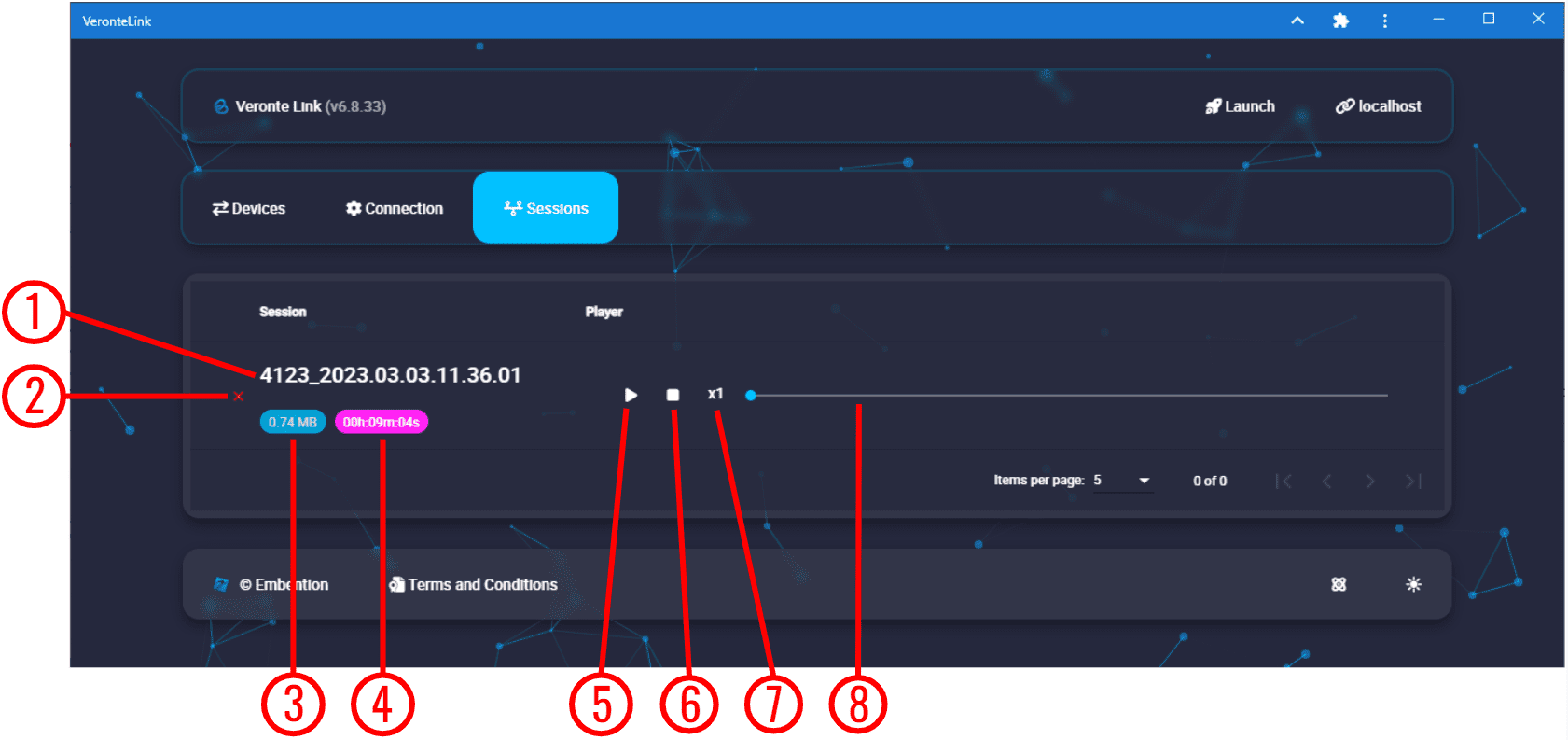Operation¶
In order to stablish a connection between a Veronte device and a PC with Veronte Link, follow the steps:
Connect the device to a PC via Serial (USB, RS232 or RS485) or UDP (Wifi or Ethernet).

PC-Veronte device connection¶
Open Veronte Link, then a similar image to the following should be displayed:

Veronte Link interface - Devices menu¶
Devices: This is the currently displayed menu. It shows the devices connected to the PC.
Veronte Link version: Informs the user about the version of the software being used.
Connection: This menu allows the user to configure the connection between the PC and a Veronte device. See Connection section for more information.
Sessions: In this menu users can play back recorded logs and flights. See Sessions section for more information.
Launch: Users can access Veronte FDR from here.
Host: Allows connecting to the local IP address or to another desired IP address.
Find all: Runs a discovery to all devices.
Sort list: Click on it to sort the list of devices.
Search from ID: Searches for a specific device by its ID. Entering the ID 999 will search for all devices.
Delete device: Only works after disconnecting the device.
Note
Only available if a device is connected or has been connected.
Refresh device: It is recommended to use in case of any connection error.
Note
Only available if a device is connected or has been connected.
Open VeronteOps: From here users can access Veronte Ops on the same version of the connected device.
Dark/light mode: Switches to light/dark mode, changing the display mode of the interface.
Switch particles: Particles can be on or off, changing the application appearance.
Terms and Conditions: Users can consult the ‘End User License Agreement (EULA)’ by simply clicking on this button.
Configuration status: It can be:
CFG: Waiting to read
CFG: Reading conf
CFG: Ready
CFG: Failed load conf
CFG: Not Downloaded
CFG: Not compatible
Device status: Can be in Normal mode, Maintenance mode or Loaded with errors.
Connection status: It can be Connected or Disconnected.
Veronte device: Here is displayed an image of the Veronte device that is connected.
Important
Once Veronte Link is executed, an icon will appear in the taskbar and a browser window will open.

Veronte Link icon¶
To close the application, it is not enough to close the browser window, it is necessary to right-click on the icon and select Close.
If the browser window is closed, it can be accessed again by selecting the Open button.
Connection¶
In this menu users must configure the connection type of the Veronte device.

Connection menu¶
Clicking on the ‘+’ icon will display the configuration panel. The parameters to be configured depend on the type of connection selected:
Warning
Apart from Type and Port parameters, it is not recommended to modify the default configuration, as the default parameters should work correctly.
Serial: USB, RS232 or RS485 connections.

Serial connection configuration¶
Port: Select the port of the computer to which the device is connected. It does not have to be the same as the one in the example image (Veronte Link interface image).
More information about the port where the device is connected is explained in Serial connection - Integration examples section.
Baudrate: This field specifies how fast data is sent over a serial line.
Parity: Is a method of detecting errors in transmission.
When parity is used with a serial port, an extra data bit is sent with each data character, arranged so that the number of 1 bits in each character, including the parity bit.
The available options are EVEN, MARK, ODD, SPACE and NONE.
Flow Control: RTS/CTS and XON/XOFF control can be configured if needed.
Data Bits: Defines the number of bits in the message. It can be configured from 5 to 8 bits.
Stop bits: Number of stop bits sent at the end of every character. Can be 1, 1.5 or 2.
Advanced:
Reconnect time: The time to consider a device reconnected. Default is set to 10 seconds.
Disconnect time: Time to consider a device disconnected is defined here. 1 second is configured by default.
UDP: Ethernet, Wifi and Pipecloud connections through 4G.

UDP connection configuration¶
Address: IP address, normally set to 239.0.0.1 (for broadcast) or 127.0.0.1 (for local).
Port: IP Port must be set.
TTL: Time To Live, is the maximum amount of time or ‘hops’ that a UDP packet can exist inside a network before being discarded by a router.
A default value should automatically be set.
Planet: Satellital connections, it requires internet connection.

Planet connection configuration¶
Satcom ID must be set.
Finally, click on Save.
Note
In case of not getting the device connected, make sure that the PC acquires a communication port.
Sessions¶
Sessions tab displays all finished device sessions.
Note
Sessions that are currently being recorded will not be displayed.
The following image and list describe each functionality.

Sessions menu¶
Session name: It is made with recording time (date and hour).
Delete session. If the user wishes to delete more than 1 session at a time, it is possible to delete them from the Veronte Link sessions folder located in the following path:
C:\Users\USER NAME\AppData\Roaming\VeronteLink\sessionsFiles weight.
Duration.
Play/Pause: Play button creates a virtual device similar to the following figure:

Virtual device¶
It starts a simulation replaying everything that happened during the session recording. It will recreate all the ocurred events with detail and Veronte Ops will display the corresponding data and trajectories; read the Veronte Ops user manual for more information.
Note
In addition, when the virtual device is in a ready state, users can open the 1x PDI Builder software and download the configuration (PDI files).
Stop: It stops playing the session. It does not delete the session.
Speed: Playing speed can be selected as x0.5, x1, x2, x4 and x8.
Display bar: Click and drag to replay any moment.
